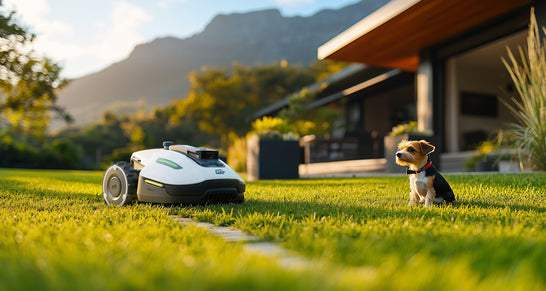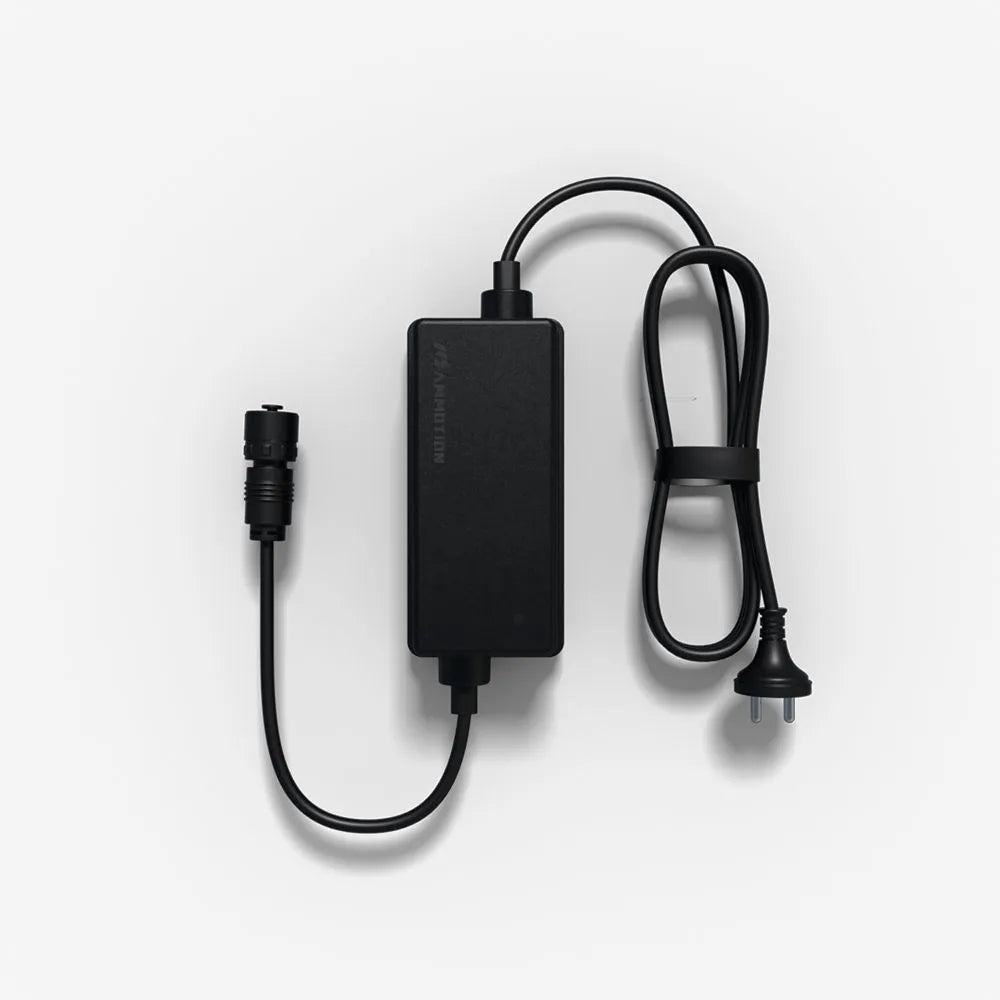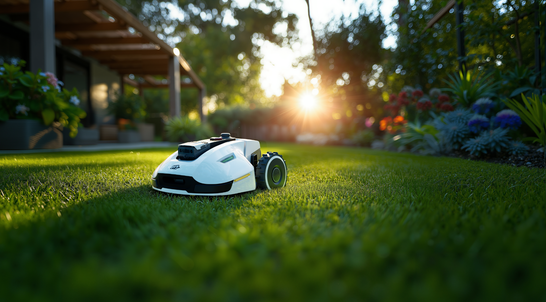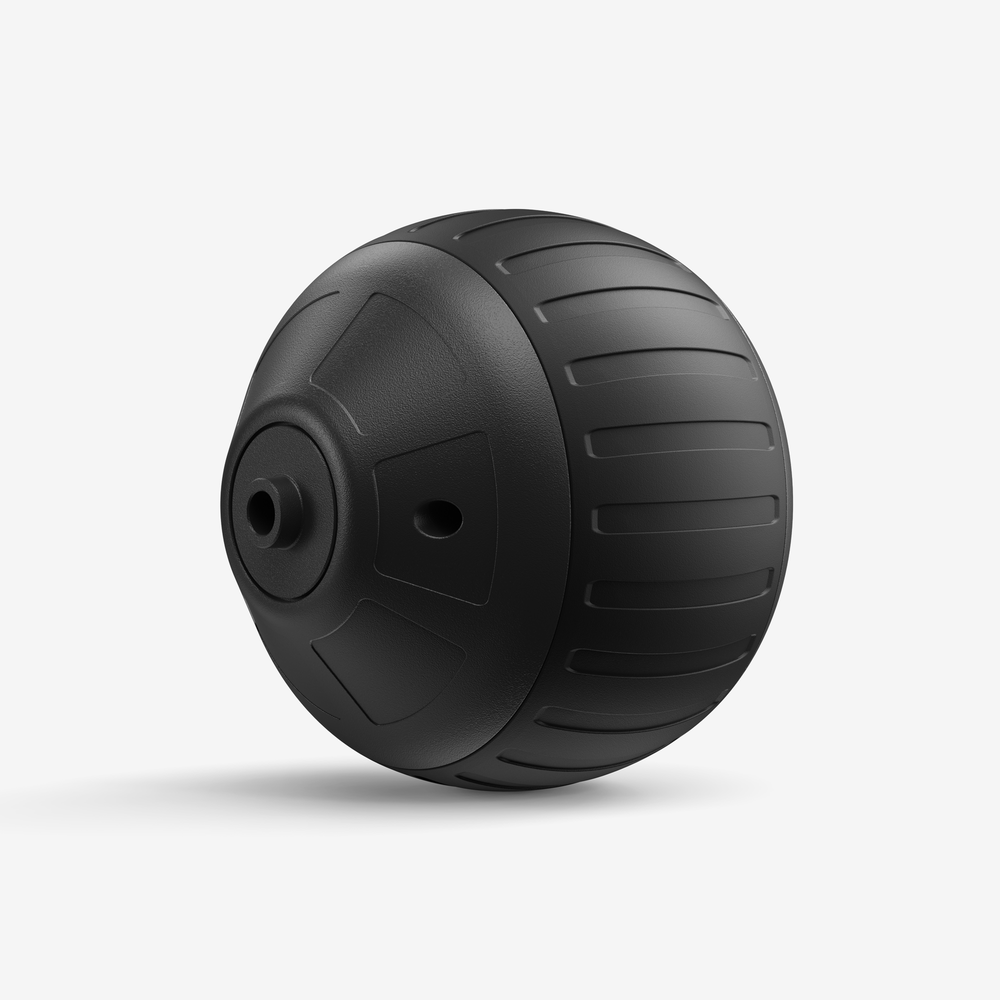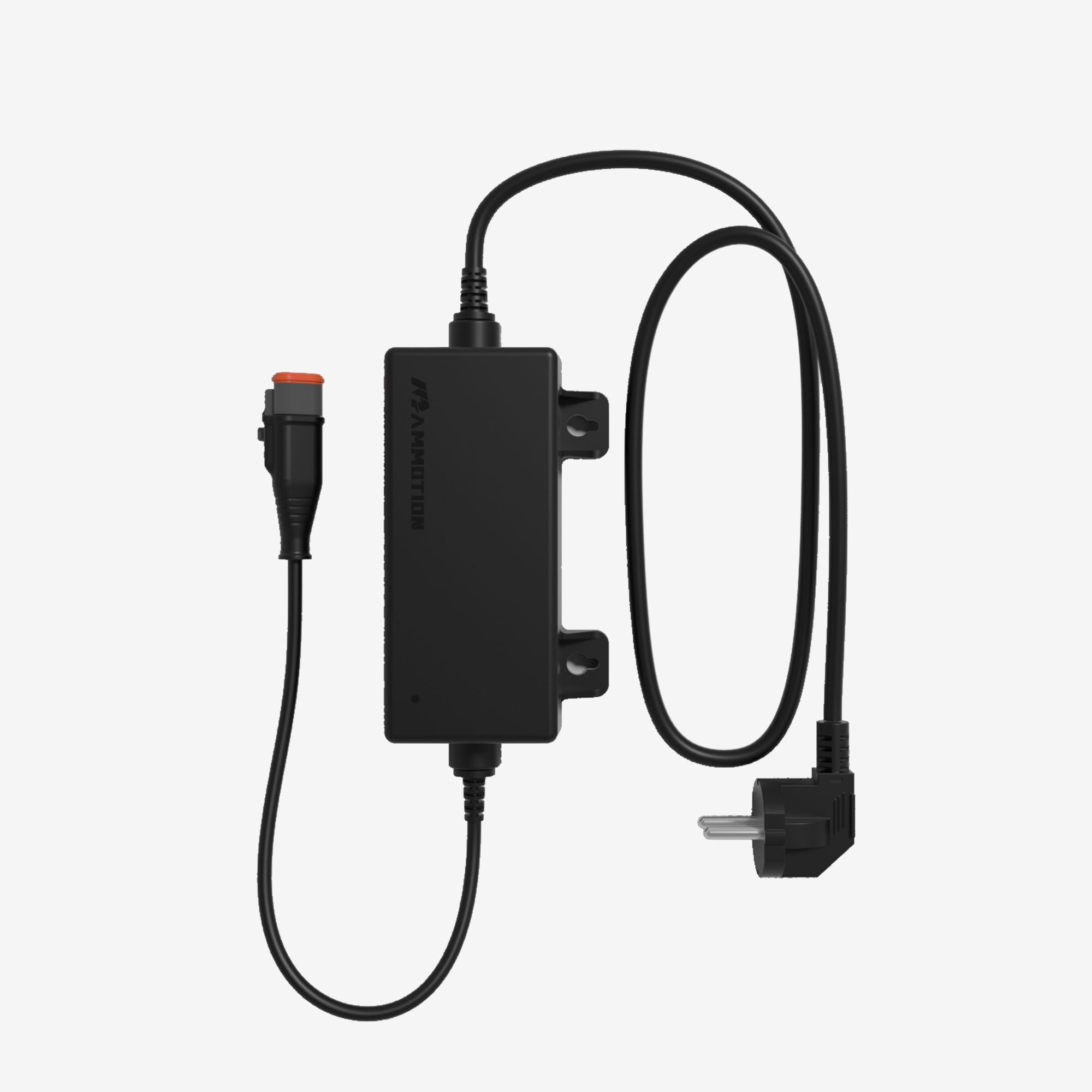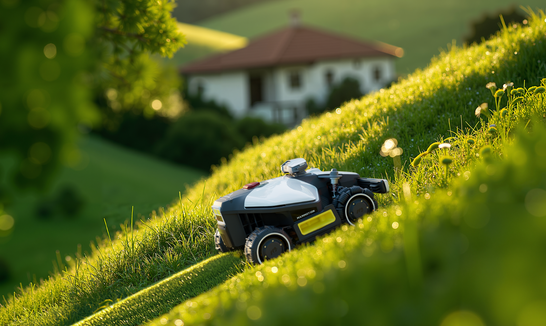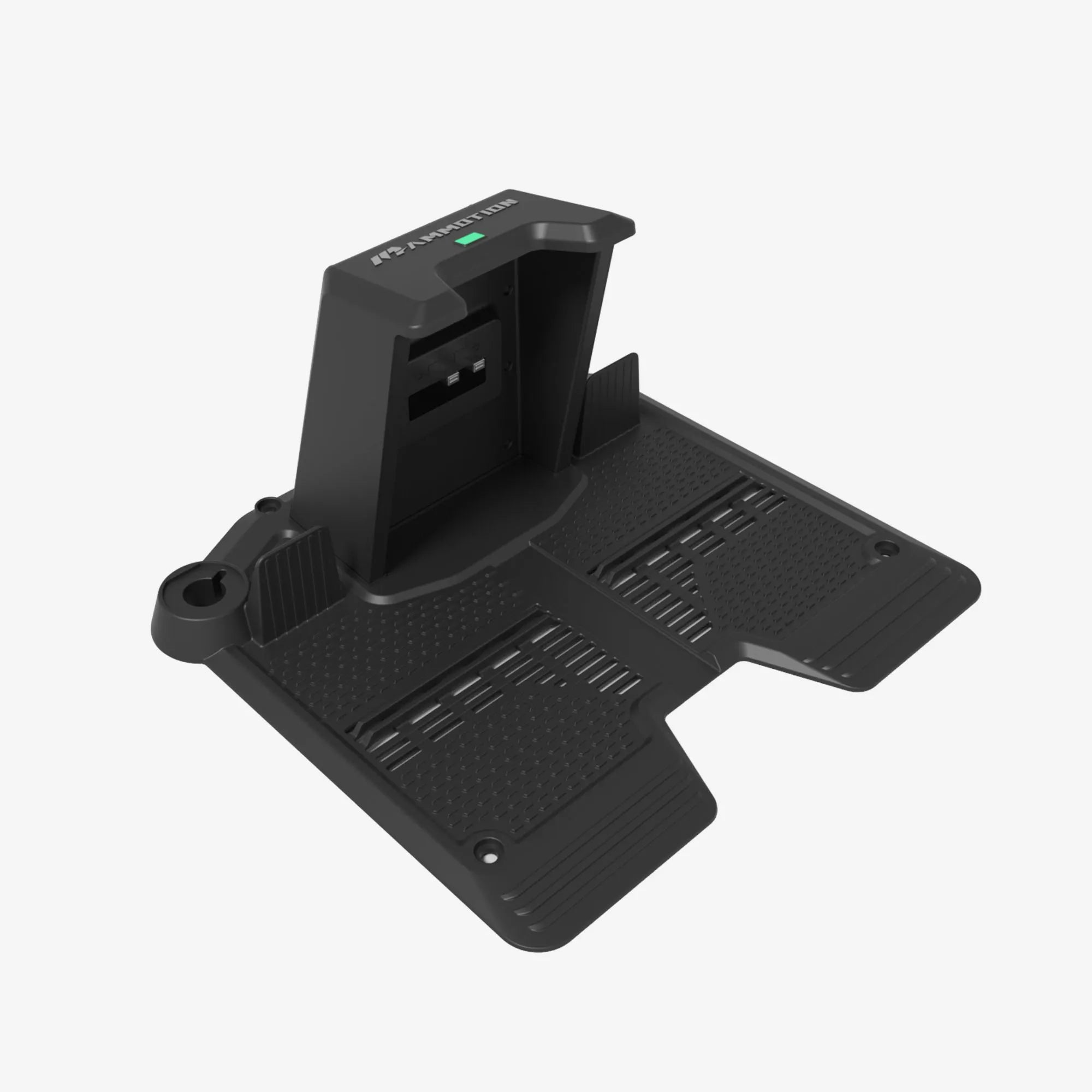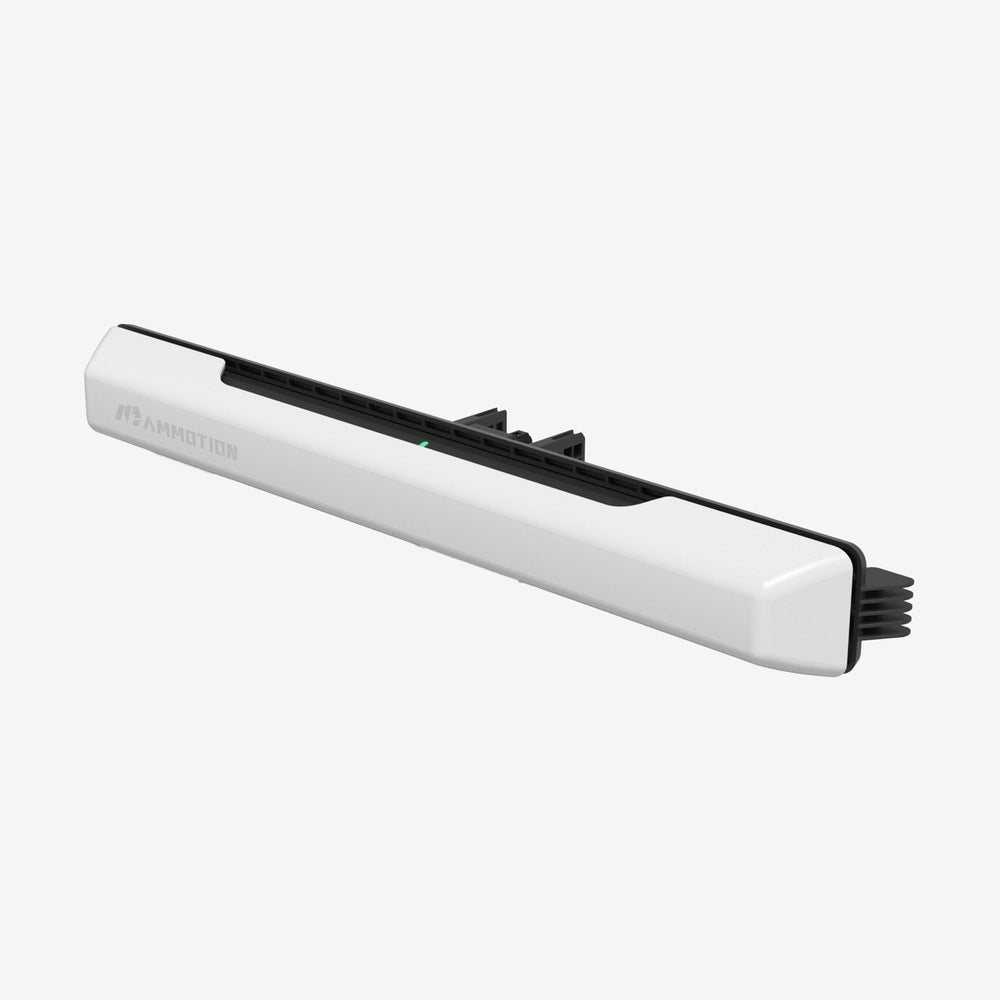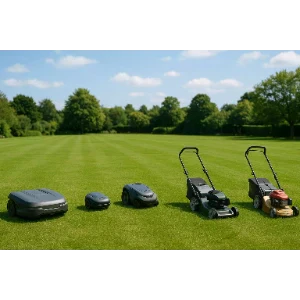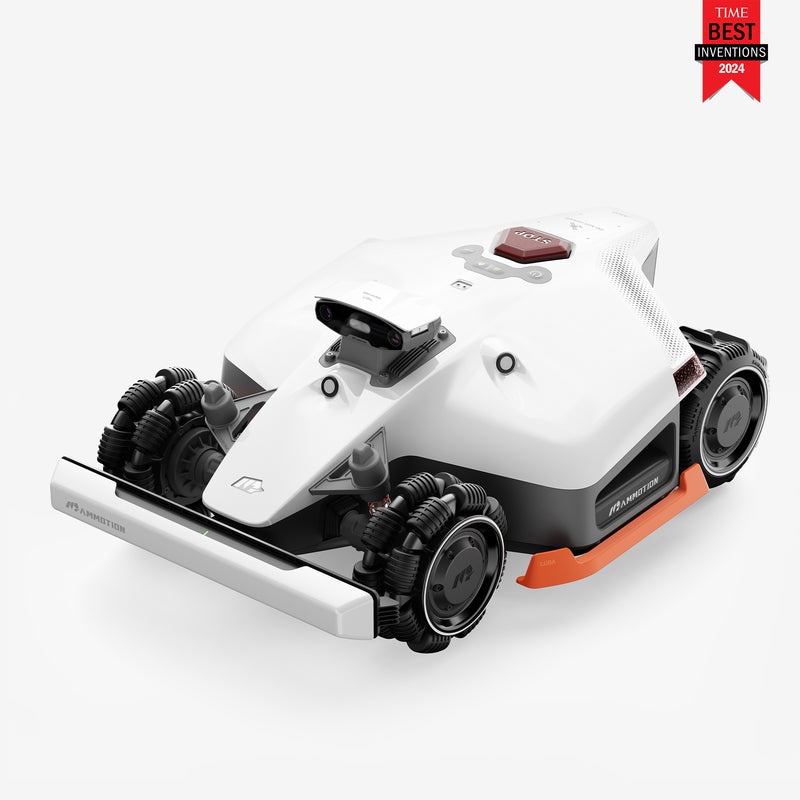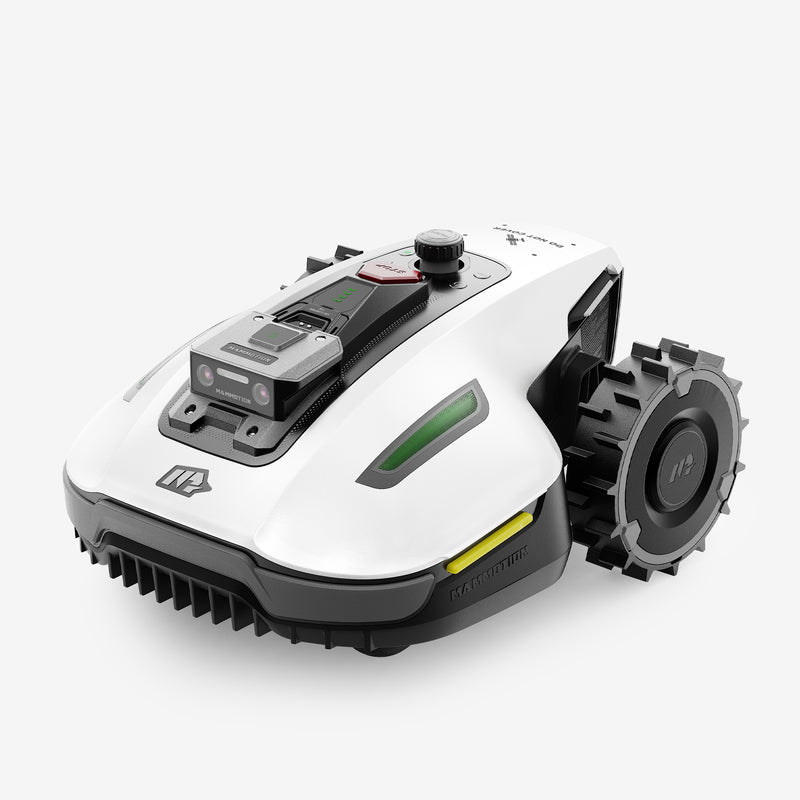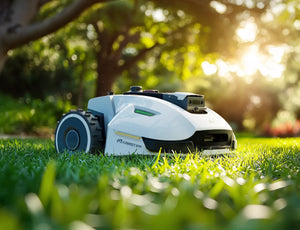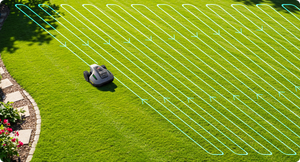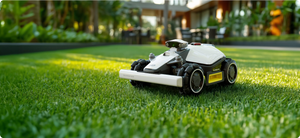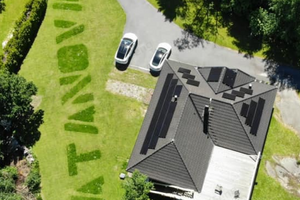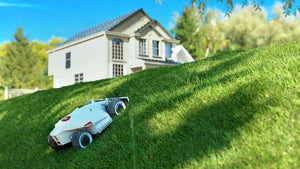Maintaining a large garden in the UK is both a privilege and a challenge. While a wide stretch of green space adds beauty and value to your property, it also requires consistent care — and mowing is often the most time-consuming part. Many homeowners find that standard mowers struggle with extensive lawns, uneven terrain, or long working hours. These issues often lead to patchy results, wasted effort, and unnecessary frustration.
Selecting the best lawn mower for large gardens UK homeowners can rely on is therefore essential. The right machine should combine cutting power, durability, and efficiency, ensuring your lawn remains healthy and evenly trimmed throughout the growing season. From petrol and cordless models to next-generation robot mowers, there is now a wide range of solutions tailored for large gardens.
In this comprehensive guide, we will explain how to choose a lawn mower for a large garden, explore the most suitable mower types, and present the best lawn mower for large gardens in UK.
Part 1. What Makes a Garden “Large” in the UK?
In the UK, garden sizes vary considerably — from compact 100 m² city lawns to countryside estates exceeding 1 000 m². Generally, any garden larger than 500 m² is classified as “large.” These expansive lawns require a mower that offers not just power, but also endurance, cutting precision, and efficiency.
Large gardens present unique challenges:
- Extended mowing duration – Narrow cutting decks (30–35 cm) require multiple passes, increasing time and effort.
- Uneven or sloped terrain – Common in suburban and rural Britain, making traction and stability essential.
- Complex landscaping – Trees, flowerbeds, and pathways demand accurate navigation and adaptability.
- Rapid regrowth – Frequent rain in the UK accelerates grass growth, so consistent and timely mowing is vital.
When selecting a mower for a large garden, focus on cutting width (≥ 45 cm), runtime or fuel capacity, and slope performance.
Part 2. How to Choose the Right Lawn Mower for a Large Garden
Choosing a lawn mower for a large garden involves balancing power, precision, and practicality. Beyond aesthetics or price, the right decision depends on garden size, terrain complexity, power source preferences, and maintenance expectations. Below is a step-by-step framework to help UK homeowners make an informed and long-lasting choice.
1. Measure and Categorise Your Garden
Start by mapping your lawn area using a measuring wheel, Google Earth, or property blueprints.
- Small gardens (<250 m²): focus on cordless or compact robot mowers.
- Medium (250–500 m²): consider cordless self-propelled or hybrid robot models.
- Large gardens (>500 m²): opt for petrol engines or advanced autonomous mowers with wide decks and long operation cycles.
This classification determines not only cutting width but also battery size, navigation system, and grass collection capacity. For example, a 600 m² garden with flowerbeds benefits from a robot mower with RTK positioning, whereas a 1 000 m² estate lawn may still need the raw power of a petrol engine.
2. Assess Terrain, Layout, and Obstacles
Topography significantly affects mower performance:
- Slopes & uneven ground: look for models with high-torque motors, rear- or all-wheel drive (AWD), and durable traction wheels.
- Complex landscaping: multiple zones, trees, and narrow paths require intelligent navigation (GPS or RTK) to avoid collisions and ensure full coverage.
- Wet or clay soil (common in the UK): choose machines with anti-slip wheels and corrosion-resistant chassis.
3. Choose the Power Source Strategically
| Type | Description | Typical Models / Features |
|---|---|---|
| Petrol | Best for very large or rough gardens. | Advantages: strong torque, long runtime, handles thick/wet grass. Limitations: noisy, higher emissions, regular maintenance. |
| Cordless (Battery) | Best for medium to large gardens. | Advantages: lightweight, low-noise, eco-friendly. Limitations: limited runtime (60–90 mins), battery replacement cost. |
| Robot | Best for all garden types (especially large, complex lawns). | Advantages: fully automatic, silent, intelligent scheduling. Limitations: higher upfront cost, requires setup & app management. |
2) By Wire or Wireless
| Type | Navigation | Setup | Precision | Suitable For | Example |
|---|---|---|---|---|---|
| Boundary-wire | Uses a physical wire to mark edges | Manual installation | Moderate | Small–medium gardens | Husqvarna Automower 315 |
| Wire-free (RTK GPS/NetRTK/AI) | Uses satellite signals and AI vision | Simple, no digging | High | Smal–large gardens | Mammotion LUBA 2 AWD |
Petrol models remain the most powerful, ideal for demanding terrains. Cordless mowers now rival them in performance thanks to modern lithium-ion batteries, offering freedom from cords and fumes. Meanwhile, robot mowers represent the most time-saving and environmentally conscious option, operating autonomously even when you’re away.
4. Focus on Technical Specifications That Matter
| Feature | Recommended Standard | Impact |
|---|---|---|
| Cutting Width | 45–60 cm | Covers more area per pass, reduces mowing time |
| Engine Power / Voltage | 140–200 cc (petrol) / 36–48 V (battery) | Handles thick or damp grass effectively |
| Runtime / Fuel Tank | ≥ 60 min / ≥ 1 L | Ensures uninterrupted operation |
| Navigation System | GPS / RTK (robot) | Prevents overlap, improves efficiency |
| Noise Level | < 75 dB | Suitable for residential use |
| Deck Material | Steel / Aluminium / Polymer | Determines durability and corrosion resistance |
5. Evaluate Maintenance, Service, and Sustainability
A good mower should last years, not seasons. When comparing models, examine:
- Blade replacement frequency and availability of parts in the UK market.
- Ease of cleaning — detachable decks or auto-cleaning systems save time.
- Eco impact — cordless and robot models reduce emissions and fuel waste.
If you value time efficiency and automation, investing in a robot mower like Mammotion Luba 2 AWD provides long-term savings in both labour and maintenance — a key advantage for homeowners with expansive or multi-zone lawns.
Part 3. Comparing Different Mower Types for Large Gardens
With today’s broad selection of garden equipment, choosing the right mower for a large garden means understanding how each power type performs in terms of power, efficiency, maintenance, and cost. Below is a professional comparison to help UK homeowners evaluate which model best fits their lifestyle and garden conditions.
1. Core Comparison Overview
| Mower Type | Power Source | Ideal Garden Size | Advantages | Limitations | Best For |
|---|---|---|---|---|---|
| Petrol Lawn Mower | Combustion engine | 500–1500 m² | Strongest cutting power, effective on thick/wet grass, long runtime | Heavy, noisy, higher emissions, frequent maintenance | Rural or very large gardens with uneven terrain |
| Cordless (Battery) Lawn Mower | Rechargeable lithium battery | 200–600 m² | Portable, quiet, low emission, no cords | Runtime limited (60–90 mins), battery replacement cost | Suburban gardens seeking convenience |
| Robot Lawn Mower (Entry-Level) | Battery with GPS/Boundary wire | 100–500 m² | Fully automatic, silent, programmable schedule | Needs boundary wire installation, limited slope handling | Urban and suburban homeowners with regular lawns |
| Robot Lawn Mower (Advanced, RTK-based) | Battery + RTK Navigation (e.g. Mammotion Luba 2 AWD) | 500–5000 m² | No boundary wire, smart mapping, handles slopes up to 75%, auto-charging | Higher upfront cost | Large, complex lawns and estates |
2. Functional Comparison
| Feature | Petrol | Cordless | Robot (Basic) | Robot (RTK/Advanced) |
|---|---|---|---|---|
| Cutting Width | 45–60 cm | 38–50 cm | 20–30 cm | 35–45 cm (multi-zone) |
| Slope Capability | Medium (≤30%) | Low–Medium (≤25%) | Low (≤20%) | High (≤75%) |
| Maintenance | Regular oil/filter changes | Minimal | Low | Minimal (software updates) |
| Noise Level | 85–95 dB | 70–80 dB | < 65 dB | < 60 dB |
| Eco Performance | High emissions | Zero emissions | Zero emissions | Zero emissions |
| Navigation & Precision | Manual | Manual | GPS or random pattern | RTK+Vision (centimetre precision) |
3. Expert Analysis: What the Data Tells Us
Petrol mowers remain the top performers for sheer power and endurance, making them suitable for rural or heavily overgrown lawns. However, the noise and fuel cost can become major drawbacks for residential users.
Cordless mowers provide an excellent balance for mid-sized gardens, offering quiet operation and mobility without cords. They are environmentally friendly but still require some manual effort and charging management.
Basic robotic lawn mowers are great for users who value automation over control, but their dependence on boundary wires and limited slope capability restricts their application to smaller, flatter lawns.
Advanced RTK-enabled robot lawn mowers, such as Mammotion Luba 2 AWD, represent the next generation of precision mowing. These models use real-time kinematic positioning and visual sensors to map large gardens, navigate multiple zones, and automatically recharge. They require almost no human intervention, deliver consistent results, and are ideal for UK users who prioritise sustainability and convenience.
Pro Tips: Although the initial cost of an RTK robot mower is higher, its long-term savings in time, labour, and maintenance can quickly offset the price difference. For example, while a premium petrol mower might cost £900–£1,200 with ongoing fuel and maintenance, a high-end robot mower like Mammotion Luba 2 AWD offers years of autonomous operation with negligible running costs — an appealing trade-off for busy homeowners.
Part 4. Best Lawn Mower for Large Garden UK in 2025 (Different types)
The UK lawn-care market in 2025 continues to evolve toward smart automation, quiet performance, and environmental responsibility.
Below are our expert picks for the best lawn mowers for large gardens UK, featuring detailed specifications and real-world suitability analysis.
| Model | Type | Coverage | Cutting Height | Max. Zones | Navigation System | Warranty | Best For |
|---|---|---|---|---|---|---|---|
| Mammotion Luba 2 AWD | Robot (RTK + AWD) | 5 000 m² | 25–70 mm | 50 | NetRTK+Vision | 3 yrs | Complex multi-zone gardens |
| Mammotion Yuka Mini 600 | Robot (RTK + Vision) | 800 m² | 20–60 mm | 15 | UltraSense AI Vision + RTK | 3 yrs | Suburban simple large gardens |
| Bosch AdvancedRotak 36-850 | Cordless Electric | 600 m² | 25–80 mm | / | Manual Operation | 2 yrs | Mid-large eco gardens |
| Mountfield SP555 V | Petrol | 1 200 m² | 25–77 mm | / | Manual Operation | 2 yrs | Rural thick grass lawns |
1. Mammotion Luba 2 AWD — Best Robot Lawn Mower for Large and Complex Gardens
The flagship Luba 2 AWD delivers unmatched autonomy for expansive and complex lawns. Its four-wheel drive system handles slopes up to 85 %, wet soil, and uneven terrain with ease. The RTK + AI Vision system eliminates boundary wires and maps up to 50 zones for precision coverage.
Quiet operation (< 60 dB), zero emissions, and multi-zone scheduling via the Mammotion App make Luba 2 AWD the ultimate professional-grade choice for UK homeowners who value efficiency and sustainability.
- Type: Robot lawn mower without perimeter wirer
- Coverage: Up to 5 000 m²
- Cutting Width: 40 cm
- Cutting Height: 25 – 70 mm
- Max. Multi-zone Management: 50 zones
- Slope Capability: 80%
- Battery Runtime: ≈ 1190 min per charge
- Positioning & Navigation System: NetRTK+Vision (centimetre-level accuracy)
- Warranty: Mower/Charging Station/RTK Station: 3 years
2. Mammotion Yuka Mini 600 — Best Entry-Level Robot Lawn Mower for Simple Large Gardens
Compact yet capable, the Yuka Mini 600 brings Mammotion’s wireless navigation technology to smaller gardens. RTK + UltraSense AI Vision system enables centimetre-level precision without any installation.
It supports multi-zone management for up to 15 zones and automatically detects obstacles, plans routes, and returns to charge when necessary.
At < 60 dB, Yuka Mini 600 is quiet enough for evening operation and produces zero emissions—making it ideal for suburban households looking for entry-level automation.
- Type: Robot lawn mower without perimeter wirer
- Coverage: Up to 800 m²
- Cutting Width: 19 cm
- Cutting Height: 20 – 60 mm
- Max. Multi-zone Management: Up to 15 zones
- Slope Capability: 50 %
- Battery Runtime: ≈ 55min
- Positioning & Navigation System: UltraSense AI Vision + RTK
- Warranty: Mower/Charging Station/RTK Station: 3 years
3. Bosch AdvancedRotak 36-850 — Best Cordless Lawn Mower for Suburban Large Gardens
The Bosch AdvancedRotak 36-850 is ideal cordless lawn mower for large garden with combing strong performance with comfort and eco-design. Its ProSilence technology reduces noise by up to 60 %, while the LeafCollect blade ensures precise cutting and mulching.
It is perfect for mid-sized gardens where users prefer manual operation but value zero emissions.
- Type: Cordless Electric
- Coverage: Up to 600 m²
- Cutting Width: 44 cm
- Cutting Height: 25 – 85 mm
- Battery Runtime: Depends on grass thickness and height
- Noise Level: >=75 dB
4. Mountfield SP555 V — Best Petrol Lawn Mower for Power and Reliability
Mountfield SP555 V model delivers raw power and durability for rural gardens with thick or wet grass. Its wide cut reduces mowing time, while the variable speed drive allows comfortable control on slopes. Though maintenance and fuel costs are higher, its robust build ensures longevity for users who prefer traditional mechanical operation.
- Type: Self-propelled Petrol
- Coverage: Up to 1 200 m²
- Cutting Width: 53 cm
- Engine: 167 cc Honda GCVx170
- Features: Variable Speed Drive, Anti-vibration Handle, Steel Deck
- Noise Level: >=75 dB
Part 5. Why Robot Lawn Mowers Are the Future for Large Gardens
Over the past few years, the way British homeowners care for their lawns has undergone a quiet revolution. Traditional mowing methods are gradually being replaced by autonomous robotic solutions, driven by advancements in AI, RTK navigation, and sustainability concerns. Here’s why robot lawn mowers — especially next-generation models like Mammotion Luba 2 AWD and Yuka Mini 600 — represent the future of large-garden maintenance in the UK.
1. Precision and Efficiency Beyond Human Capability
Modern robot mowers equipped with RTK + Vision positioning systems can achieve centimetre-level cutting precision — far exceeding manual mowing. They can map entire gardens, divide them into zones, and maintain consistent cutting height automatically.
For example, Mammotion’s Luba 2 AWD manages up to 60 zones autonomously, adapting to terrain, slopes, and growth density. The result is an evenly trimmed lawn that remains pristine week after week, without human effort.
2. Time-Saving and Effortless Maintenance
Unlike petrol or cordless mowers, robot mowers operate fully unattended. Once set up, they automatically start, mow, and return to charge. This allows users to reclaim up to 30–40 hours per season normally spent pushing heavy mowers.
Moreover, with features like auto software updates, self-cleaning decks, and brushless motors, Mammotion’s designs minimise maintenance — ensuring smooth long-term performance without constant intervention.
3. Sustainability and Energy Efficiency
As the UK continues to promote low-carbon lifestyles, robot mowers align perfectly with this direction. They run on rechargeable lithium batteries, producing zero emissions, minimal noise (< 60 dB), and low energy consumption — typically costing under £10 per year in electricity.
In contrast, petrol mowers emit significant CO₂ and require regular oil changes, making robots the eco-conscious alternative for the environmentally aware homeowner.
4. Smart Integration and User Experience
Modern homeowners value control and convenience. With app-based lawn management, users can:
- Schedule mowing sessions remotely
- Adjust cutting height dynamically
- Manage multiple lawn zones
- Monitor real-time progress and battery levels
For example, the Mammotion App allows users to visualise their lawn map, assign mowing frequency per zone, and even adjust patterns for aesthetic results — making it a truly intelligent gardening companion.
5. The UK Market Outlook: Automation as the New Standard
According to market reports (GfK & Statista 2024), robot lawn mower adoption in the UK has grown over 45% year-on-year since 2022, particularly among homeowners with gardens over 500 m². The appeal lies in combining labour-free convenience, sustainability, and premium precision.
With the UK’s weather demanding frequent mowing, robot systems that can operate autonomously even after rainfall — like Mammotion’s AWD models — are set to dominate the market in the coming decade.
Conclusion
As technology continues to advance, the vision of perfectly lawn mowers for large gardes that take care of itself is no longer futuristic — it’s simply the new standard for modern British gardens. robotic lawn mowers like Mammotion's product are quietly reshaping how large gardens are maintained across the UK. For many homeowners, the shift toward automation reflects not only convenience but also a more sustainable lifestyle choice.
Frequently Asked Questions
1. What type of lawn mower is best for a large uneven garden in the UK?
For large uneven gardens, the best lawn mower is one with strong traction and adaptive navigation, such as an all-wheel-drive robot mower or a self-propelled petrol mower. Models like the Mammotion Luba 2 AWD can handle slopes up to 80% and maintain cutting stability across varied terrain, making them ideal for UK countryside lawns.
2. Are robot lawn mowers suitable for wet British weather?
Yes. Many new-generation robot lawn mowers for large gardens in the UK are equipped with IPX-rated waterproofing and rain sensors. High-end models, like those with RTK navigation systems, automatically pause during heavy rain and resume when conditions improve — protecting both the mower and your lawn’s surface.
3. What is the average running cost of a robot lawn mower per year?
Most cordless and robot lawn mowers cost less than £10–£15 annually in electricity to operate. This makes them far more cost-efficient than petrol mowers, which can consume £50–£100 worth of fuel per season.
4. Can I use a cordless lawn mower for a garden over 1,000 m²?
For lawns larger than 1,000 m², a single cordless mower may not provide enough battery capacity. It’s better to use a robotic or petrol-powered mower with extended runtime or larger cutting decks.
5. What are the main advantages of RTK navigation in robot lawn mowers?
RTK (Real-Time Kinematic) navigation allows the mower to achieve centimetre-level accuracy when mapping and mowing. Unlike traditional GPS or random mowing patterns, RTK or even NetRTK systems (used in Mammotion Luba 2 AWD) ensure precise, efficient coverage — no missed spots, no overlaps, and no boundary wires.
6. How long do robot lawn mower batteries typically last before replacement?
High-quality lithium-ion batteries in robot mowers for large gardens usually last 3–5 years, depending on use frequency and charging cycles.
7. What safety features do modern robot lawn mowers include?
Advanced models include lift and tilt sensors, obstacle detection, emergency stop buttons, and child locks. Some systems, such as UltraSense AI Vision in Mammotion’s Yuka series, can even recognise pets or garden furniture, pausing operation to prevent accidents.


